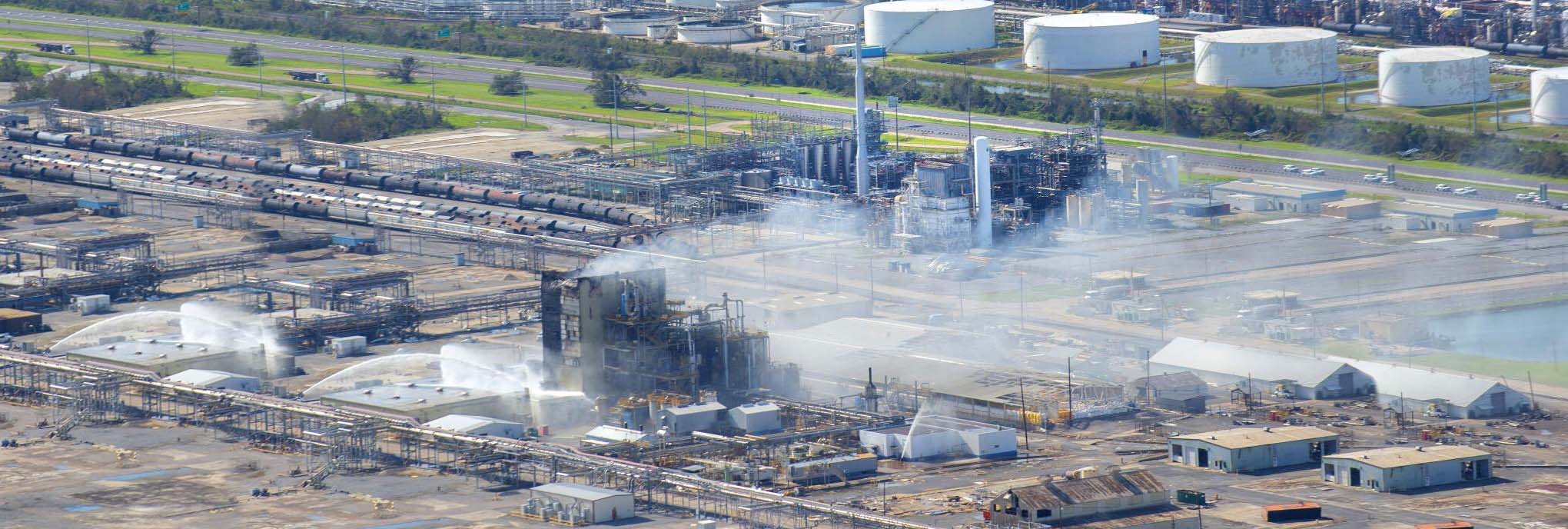Partnering with a proven disaster response provider is crucial to getting essential infrastructure back online safely following a catastrophic event.
Disasters happen. From winter storms to floods and hurricanes, extreme weather events can cause damage, unplanned outages, and economic losses that affect a range of stakeholders, from plant-floor employees to end-users.
Drawing on decades of experience, Audubon’s disaster recovery and restoration services team is dedicated to helping industrial clients minimize unplanned downtime and mitigate disaster impact—safely and efficiently.
In this Q&A, we explore how an actionable roadmap today can help expedite response, rebuilding, and restoration efforts in the future.
Q: How does Audubon identify and assess damage after a catastrophic event?
A comprehensive recovery and restoration plan should assess the state of the infrastructure and use that information at the beginning stages of the recovery process. Variables that could impact recovery include whether the facility had a controlled shutdown and whether other components are functioning during and after the event.
Audubon works with petrochemical operators to gather a full understanding of this information. Then, our recovery and restoration experts leverage it to design a strategy and schedule specific to the facility and the damage sustained.
Q: Who comprises the recovery and restoration team?
The response and restoration team is selected based on the particulars of the disaster. Each team includes a recovery manager and four to five subject matter experts who are industry-recognized for their contributions to the fields of process safety and risk management, including the study of accidental hazards such as fire, explosions, and toxic events.
After its formation, the team creates a worklist that addresses critical repairs and outlines a schedule of completion. Although natural disasters can delay onsite inspection, we can still develop this strategy and modify it once personnel can safely access the plant.
Q: What are the key priorities in the disaster recovery and restoration planning process?
Procurement and security are essential. Once an operator requests our help with a restoration project, Audubon’s procurement experts are immediately engaged to ensure the client can access equipment and resources that streamline the recovery process.
We also focus on securing the plant to ensure the safety of personnel, infrastructure, and the environment. We address basic utilities and infrastructure first. Depending on the disaster, this can involve drying out critical plant components or clearing electrical gear on the ground level.
Q: What is the typical recovery timeline following the preliminary damage assessment?
Our teams base turnaround times on the severity of the incurred damage and the size of the plant. Utilizing Oracle’s P6 EPPM platform, we deliver a recovery and restoration schedule in four to five weeks. Our programs prioritize essential infrastructure and give operators a clear outline of the activities required for facility restoration.
Q: How does Audubon address procurement and supply chain issues that can impact restoration schedules?
The decreased availability of smaller equipment can prevent a plant from safely getting back online. When supply is low, purchasing power is imperative to obtaining these components. Audubon’s extensive network of supply chain and procurement relationships helps mitigate schedule deviation and ensure facilities resume operations safely and efficiently.
Q: Are there opportunities to enhance plant operations in the wake of disaster?
Although no petrochemical client wishes for a disaster, such events offer unique chances to improve efficiencies for future operations. Plant owners can gain back lost time by planning and completing turnaround projects during recovery and restoration. Working these projects into the planning process can potentially defer the next turnaround and allows the plant to operate at peak efficiency when brought back online.
Audubon leverages multi-disciplinary capabilities and field expertise to help clients overcome the impact of catastrophic events. We are committed to executing comprehensive critical path schedules that get operations back online safely and efficiently. Learn more about our disaster recovery and restoration services here.

